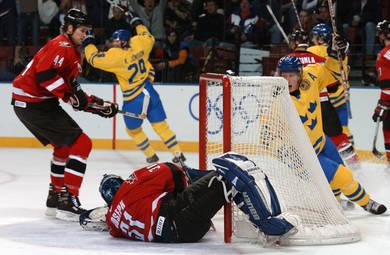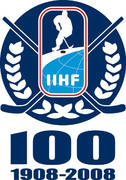

Story #24 IIHF rules spotlighted at 2002 Olympics, later adopted by NHLFebruary 9-24, 2002 — Salt Lake City, Utah
February 15, 2002, might well be considered one of the most important dates in hockey’s history. On the surface, it was day one of the Olympics for the top teams competing in Salt Lake City with full NHL participation. However, the four games that were played that day, specifically Canada vs. Sweden, came to redefine the game and anticipate significant rule changes for years to come.  This eliminated the common NHL strategy of stalling for time while ripping a piece of loose tape off a stick, or going to the bench for another stick, or otherwise delaying the game. Players had 20 seconds to get set for the faceoff, and whether they were ready or not the puck was going to be dropped. Officials called obstruction violations closely, and the result was a stunning 5-2 Sweden victory in a game so entertaining and quick it was shocking to see the difference between the last NHL game and this first Olympics game. About the Top 100 StoriesAs part of the IIHF's 100th anniversary celebrations, www.IIHF.com is featuring the 100 top international hockey stories from the past century (1908-2008). Starting now and continuing through the 2008 IIHF World Championships in Canada, we will bring you approximately three stories a week counting down from Number 100 to Number 11.
The Final Top 10 Countdown will be one of the highlights of the IIHF's Centennial Gala Evening in Quebec City on May 17, the day prior to the Gold Medal Game of the 2008 World Championship.
These are the criteria for inclusion on this list: First, the story has to have had a considerable influence on international hockey. Second, it has to have had either a major immediate impact or a long-lasting significance on the game. Third, although it doesn't necessarily have to be about top players, the story does have to pertain to the highest level of play, notably Olympics, World Championships, and the like. The story can be about a single moment — a goal, a great save, a referee's call — or about an historic event of longer duration — a game, series, tournament, or rule change. |
 Click here for the 100 Top Stories
|
|






